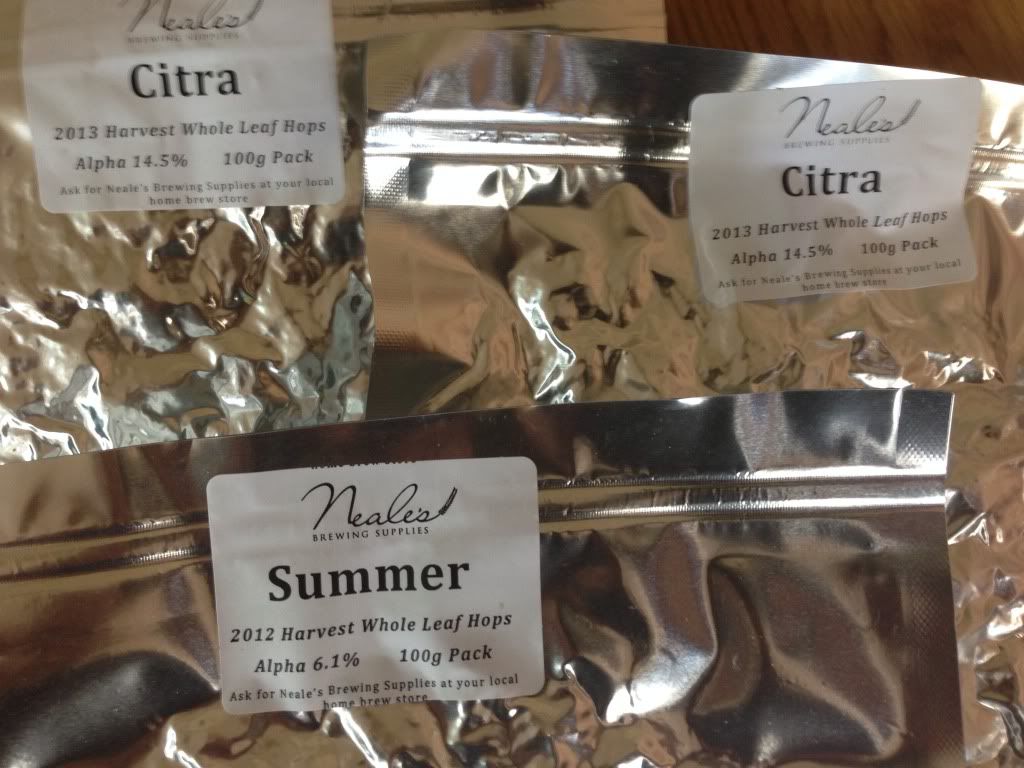Now, I know you nerds can surely plug this into your fancy-pants brew calculators and software, and then shoot all kinda holes in my simple homespun process, but I assure you it's reliable, repeatable, very educational, and very cheap. You don't necessarily need an expensive scale, stir plate, magnetic bar, hydrometer, racking tube, flasks, air-locks, stoppers, etc…though any of the above come in handy.
Believe it or not, this simple "recipe" brews surprisingly tasty ale (just not enough of it!), and the tweaking possibilities are endless: quantities, adjuncts, timing, temperatures, etc, without committing much. If it sucks, no big deal. If you want to, you could whip-up a different combo every night until you run out of ingredients or containers. In the meantime, you'll accumulate lots of great yeast. And when you stumble upon a magically delicious combo, here's how you can easily super-size it:95% = 84 g = .185 lb = 3 oz = ½ cup, Light Dry Malt Extract
5% = 6.8 g = .015 lb = .25 oz = 1 tsp, Molasses
+pinch of yeast nutrient (or not)
+pinch of gypsum (or not)
Top-up with water to ≈900ml which will boil-down to ≈700ml, stir well, and add
.1 oz = 2.8 g, hop variety of your choice
Boil ≈ 20 min, chill, pour through sanitized strainer into clear sanitized container with loose-fitting lid or airlock, add bottle-culture yeast of your choice. This is also a handy technique for building up a yeast starter from a bottle of your own homebrew, even years later.
Swirl the container periodically or place on a stir plate. Again, loosely cover but DO NOT SEAL THIS CONTAINER, or else you have just created a timebomb! A little piece of sanitized aluminum foil works as well as anything else. Use common sense sanitation, don't stress out. Remember, those scary infectious wild yeasts and bacterium are single-cell organisms. They don't have legs nor wings, they only get in your beer if you put them there.
Allow plenty of time for full fermentation and yeast to drop-out, move it to the fridge and wait for even more settlement. Lager it there as long as you like. When the time comes, carefully rack beer into a couple smaller bottles with a little priming sugar using a sanitized funnel. Cap the bottles and allow typical conditioning time before tasting. With regards to the left-behind yeast, use it to brew a bigger batch size or continue to step-up as desired.
Your finished beer will be something like:
OG: 1048
FG: 1010
ABV: 4.9%
IBU: ≈ 30-50 (wildly dependent on your hops variety)
Colour: 5°SRM/10°EBC, golden amber
If your typical batch size is 6 US Gallons/5 Imperial Gallons/22.7 Liters, that's equivalent to 32.4 of these tiny 700ml batches. So, whichever units you prefer, simply multiply each by 32.4, such as 6 lbs DME, .5 lbs molasses, 3.25 oz hops.
Of course, we all-grain brewers cringe at using DME for a full-size batch, so multiply the DME weight by 1.66, such as 6 lbs x 1.66 = 10 lbs pale malt. See how easy it is to try-out crazy ideas, then develop a solid starting point all your own?
Who's with me?! Feel free to add your own crazy ideas below.
-Seymour





